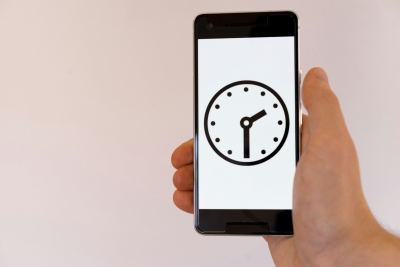
How ‘Zoom hoodies' remind me not to judge
How ‘Zoom hoodies' remind me not to judge
Written by: Jadelin Pikake Felipe
60. 30. 300. 10. This is what these numbers represent. In the last sixty days, I have done dozens of Zoom presentations for work, helping students navigate the college application process. I’ve presented to hundreds of high school students in their virtual classrooms and have seen no more than ten students voluntarily opt to show their faces on screen.
In my first few weeks doing virtual presentations for my job, and seeing so few faces on screen, I figured it was students being shy or that it was the schools’ policies for students to have their cameras off in order to minimize the number distractions there’d be for guest presenters like myself. While some of this is true, what I am observing and learning over time is that there is more to why I see so few faces online every day.
“Good morning, students. Alright, we have a guest speaker today who will be presenting to us. Turn on your cameras, please. Show your lovely faces, I want to see them. Let’s welcome our guest.” This is what a few teachers would tell their students as I prepared to give my spiel. Since I had gotten accustomed to seeing so few students’ cameras turned on during my presentations, I was eager and excited for any opportunity I had to see new and young faces. For the past fifteen years, I’ve primarily worked on college and university campuses supporting students outside the classroom in areas of enrollment, new student orientation, academic advising, career development, mentorship, and alumni services. I say all of that to emphasize just how much I’ve missed meeting and getting to know students on a personal level, aside from how the pandemic has magnified this.
Ceiling light. Ceiling fan. Popcorn ceiling. White painted ceiling. And a lot of different colored tops of foreheads. This is what I see a lot of when Zoom cameras are turned on.
Perplexed at this common sight, I asked a colleague of mine who was a former teacher and school administrator “What do you think about this?”
And she said, “Seeing only their ceiling or foreheads when they turn on their cameras--it’s the equivalent to the hoodie.”
I asked with confusion, "The hoodie?” “It’s like when we were in high school. You don’t want to be seen, you don’t want the attention on you.” “That’s what I think is behind the whole only- seeing-their-forehead-and-ceilings thing.” There’s psychology around what the ‘Zoom hoodie’ represents. Boom. A mind blown moment. Aha. An “I see you” moment; a moment where you see others differently when given another perspective. It made more sense to me.
Aside from the very few faces I was seeing when showing up to do presentations in students’ virtual classrooms, I was convinced I’d for sure get to see full, smiling, or at least more engaged faces when I had one-on-one meetings students scheduled with me to get their questions answered and to provide them support. I figured not being in the presence of their peers in their virtual classroom on Zoom and the peer pressure that came along with that environment; that the privacy and nature of a one-on-one meeting would give me the opportunity to see students’ faces in real time. I’d meet and get to know them more and be able to connect with them more deeply. To my surprise, during these one-on-one virtual meetings, I have come in contact with a whole gamut of situations I had no idea I would experience. It’s been one of those moments where I’ve been reminded to not judge a book by its cover.
During my one-on-one Zoom meetings with students, for almost every single one, cameras have stayed off on the other person’s end and most of our communication has been made up of me vocalizing aloud and reading their responses in the chat. It has certainly made for an interesting communication exchange between two people. Receiving brief chat messages, and moments where cameras were turned on--as short as a few seconds to a few short minutes--I’ve gotten a glimpse into the other side of the screen, a snippet into some students’ lives and reality.
In my one-on-one meetings with students, some have been in a car commuting to get to their next destination and taking their Zoom meeting with me on their mobile phone. Sometimes spotty WiFi connection was improved when we turned off our cameras. And there were students who were caring for a sibling while they were trying to take care of school business during our scheduled meeting together, and didn’t want there to be so much background noise to distract us.
I’ve come to realize it’s so easy to jump to conclusions. Here I was; quick to make assumptions, judging students as being antisocial or dismissive by not showing up on screen, when really so many of the students are simply doing as best as they can given their situations: to show up.
In my Zoom experience, in the absence of knowledge about why students choose to be off-camera, I “filled in the blanks” with assumptions and judgments based on my own experiences and desires. (I miss and want to see faces! I want confirmation and feedback on what I’m saying! I want to know they are engaged! I want to know how I can best support them). It’s easy to react in these ways by default. The truth though is often more poignant, and less about us, than we imagine.
Despite our best intensions, it's natural to view situations through our own lens and it takes consistent practice to respond with empathy.
Daily Haloha is a mobile app that I use daily that is helping me grow my empathy muscles; building empathy for myself and for others.
Daily Haloha requires us to fill in our own blanks in response to a shared question prompt or topic before being exposed to the thoughts of others - as being compassionate and curious about ourselves opens us up to others. What I like about the app is that it removes the opportunity to make assumptions and judgments, leaving more room for truly seeing others. The idea is to slowly challenge our habit of making reactive assumptions/judgments.
The educator in me and the human I am knows there is richness in having face-to-face, real-time, dialogue, even if it’s virtually on Zoom. And that when there is an absence of facial and non-verbal cues to pick up from, or even real-time audible voice to hear, a lot can be lost in translation. The absence of these things concern me for the students I’m presenting to and meeting with every day. How are they feeling today? Is there something else I can do or say to better support them?
While we all will have to wait and see how things unfold for students who have been doing distance learning for the past year--how it will affect them developmentally, socially, mentally, and even physically--good news is that there are many great tools out there to help young people (and quite frankly, people of all ages) to navigate this transition of living so much apart from one another; tools that can help build a sense of community, togetherness, and empathy.
Using Daily Haloha has helped improve my mood, relieve a sense of isolation, and has helped me feel more connected to others. It’s an app that helps its participants create a simple daily routine to feel more in tune to themselves and connect anonymously with others around the world on a shared topic. My recent Zoom experience was a reminder of how easily we can slide into making assumptions and judgments, and Daily Haloha creates an environment where we can experience curiosity and compassion instead.
The app is a simple daily routine sparked by a single thought-provoking question:
Check in with yourself.
Take a moment to reflect and fill in the blanks of the daily question with a little bit of you.
Connect with another.
Swap a Haloha to hear and be heard, anonymously and judgment-free.
Be a part of the bigger picture.
Scan the Haloha Wall for a story-portrait of what it’s like to be us.
Using Daily Haloha has become a healthy daily routine I look forward to, one I’ve incorporated into my life complimenting my regular gratitude and journaling practice. I love how simple it is to use and how easy it is to quickly see how others are feeling. The Haloha Wall of shared posts is made up of different colors that users select corresponding to their mood. It’s a pretty cool social observation to see how others feel compared to you. One of my favorite features of the app is getting notified when someone has responded to my Haloha with a sticker noting things such as “You’re not alone”, “I feel you”, “I see things differently”, “That’s interesting”, “You inspired me”, and “You made me smile.” More often than not, after using Daily Haloha, I feel less alone, I smile, and feel a stronger sense of camaraderie, support, and community. That’s a pretty incredible feeling of connection with complete strangers online, many who are across the globe from me.
Given the work I do professionally, supporting high school seniors and recent graduates applying for a college program, and taking into account the Zoom experience I’ve had over the past two months, I can see the significance and power a tool like Daily Haloha can have particularly on young people. Daily Haloha helps nurture our ability to practice empathy with and for others and build community. I think it would be incredible to see how a tool like Daily Haloha can help guide students, teachers, staff, employees--people across generations--and the insights and learnings that can come from these solo reflections plus interaction with others. I feel education, business and all in-between could benefit from a tool like Daily Haloha.
Let’s not be so quick to judge others and know that we are not alone and are all in community with each other.
Bio
Jadelin has fifteen years of professional experience in university and college student development, EdTech, and research. She holds a BA in Ethnic Studies from the University of Hawai’i at Manoa and a MA in Organization and Leadership from the University of San Francisco. She has a passion for digital wellness and wrote her thesis on Understanding How Intentionally Unplugging From Cell Phones Shapes Interpersonal Relationships and the Undergraduate College Experience. Recent blog articles she wrote for Mudita, a new kind of digital wellness tech company, include: A Shared Vision For The Future and the Impact of Unplugging on Shared Spaces and includes her thoughts on unplugging during the pandemic.
Currently, she’s a part of the Honors Pathway education social venture that is committed to helping first generation college students complete college and launch professional careers via a no-cost college pathway program MicroCollege. Her goal is to introduce digital wellness to students, see it be put into practice, observe and learn how it plays a part in young people’s student success and overall well being. Jadelin currently lives in Northern California and in her unplugged time she enjoys dancing hip hop, going to the beach, and finding delicious sushi and Korean food.
Related stories

Behind the screen: How much screen time is too much for adults
How does excessive screen time impact adults? Learn how to embrace digital minimalism for a healthier, more balanced life.

Achieving Work-Life Balance Through Mindful Tech Use
How do you use technology to support your work-life balance and well-being?

How to increase your resilience to stress
Stress is an inevitable part of life, but building resilience can help you cope with it better.
If you'd like to receive the best stories from our blog, keep up to date with our progress and get notified about our product releases and special discounts.